
STOMPer seaeagle was impressed to see weaver birds, or weaver finches, building their intricate nest at Lorong Halus Wetland, located in Punggol.
The weaver birds get their name because of their woven nests are the most elaborate of any birds'. The nests vary in size, shape, material used, and construction techniques from species to species.
The birds build their nests together for protection, often several to a branch. Usually the male birds weave the nests and use them as a form of display to lure prospective females. The weaver bird colonies may be found close to water bodies.
The Lorong Halus Wetland is part of the Punggol Promenade and was officially opened on March 5, 2011. It was transformed from a landfill into an educational site and biodiversity haven for plants, birds and other wildlife.
Said the STOMPer:
"Spotted these weaver birds (finches) building their sophisticated nest at Lorong Halus Wetland.
"I wonder who taught them the skills?"
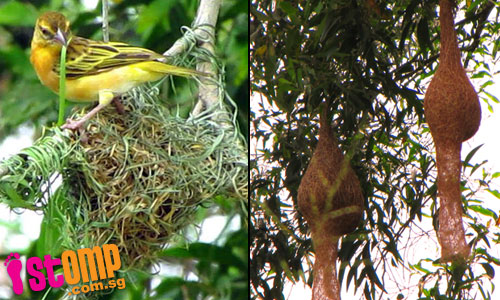
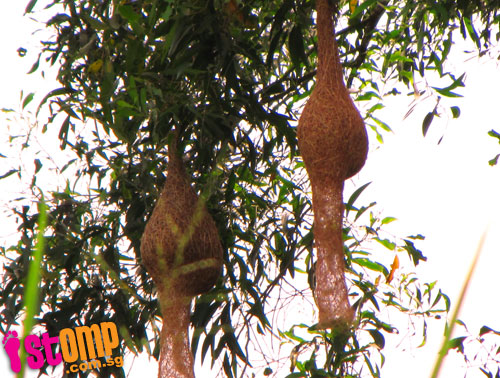

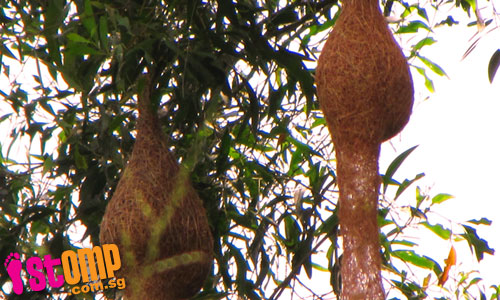

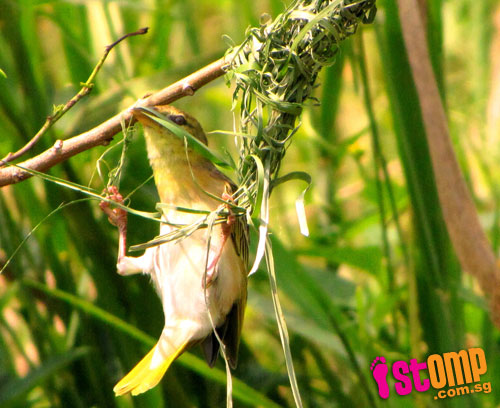
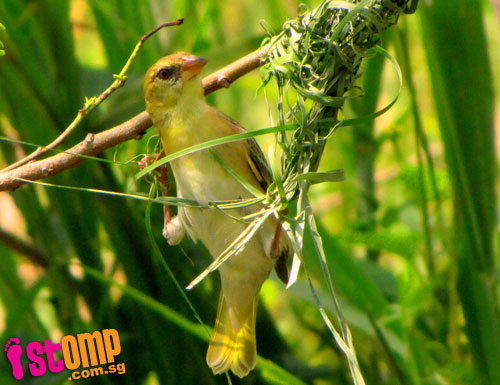

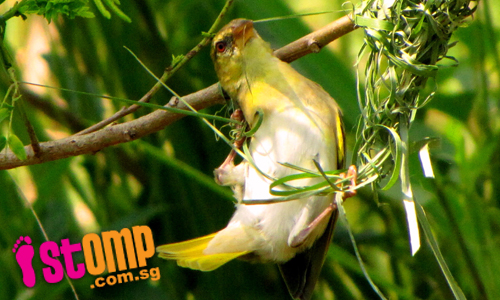
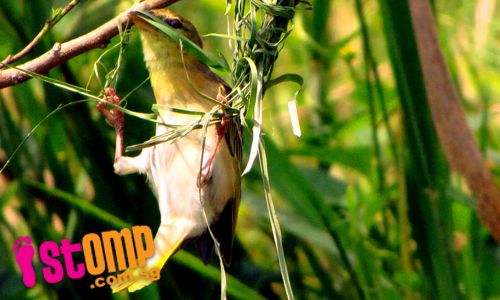
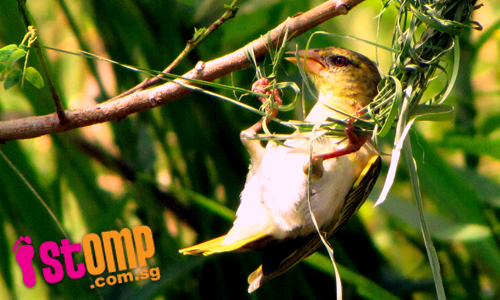
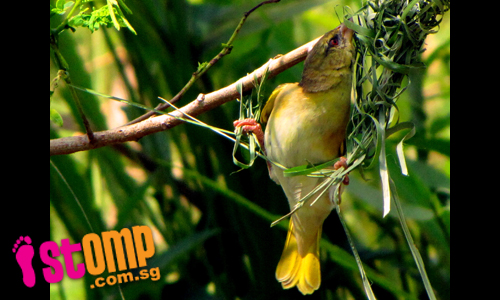
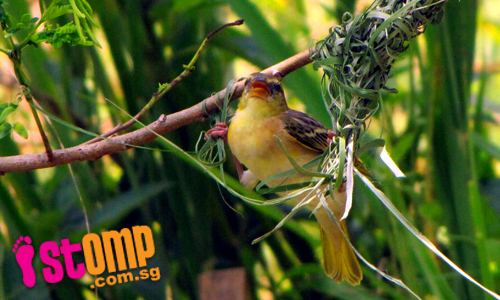
The baya weaver (Ploceus philippinus) is a species that is common and widespread in grasslands, marshes and cultivated areas throughout Singapore. It would appear that the Lorong Halus Wetland provides another good nesting area.

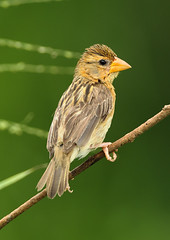
Baya weaver male (left) and female (right);
(Photos by chrisli023)
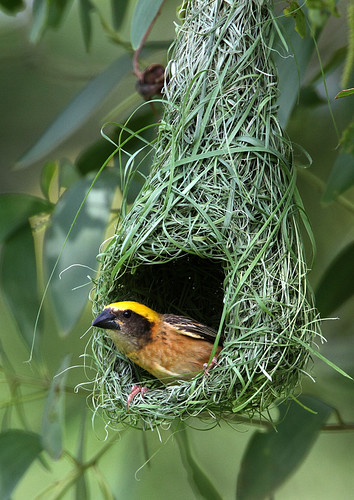
Baya weaver nest in the process of construction;
(Photo by chrisli023)

Completed nest of baya weaver;
(Photo by ltk2505)
Although this is the only native species of weaver in Singapore, a number of other species have been recorded in recent years, the result of captive birds escaping or being deliberately released. I wrote previously about the baya weaver and the various non-native species in this post from 2009, although the number of exotic species recorded has since increased, as documented in this recent post on the Bird Ecology Study Group.
Besides the baya weaver, the streaked weaver (Ploceus manyar) and Asian golden weaver (Ploceus hypoxanthus), both non-native species from other parts of Asia, have been recorded at Lorong Halus.
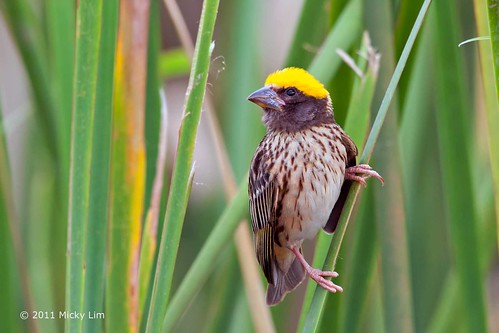
Male streaked weaver, Thailand;
(Photo by Micky Lim)

Female streaked weaver, Lorong Halus;
(Photo by myrontay)
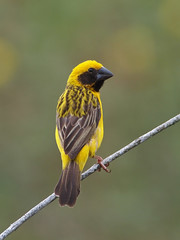

Male (left) and female (right) Asian golden weaver;
(Photo by wokoti)
While the streaked weaver was first recorded breeding at Marina East in 2003, and remains a rare introduced resident, the Asian golden weaver was not known to breed locally until this year, where nesting was documented at Tampines Eco-Green.
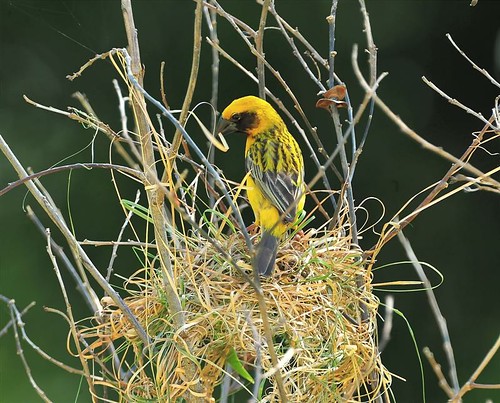
Asian golden weaver building nest, Tampines Eco-Green;
(Photo by NatureInYourBackyard)
A number of other weaver species from Africa have also been sighted in Singapore. In fact, while the nests that were photographed in the original submission are those of the baya weaver, the closeup shots of the birds actually feature one of these foreign species, a female golden-backed weaver (Ploceus jacksoni). A native of east Africa, this species has been recorded in small flocks in the Lorong Halus area.
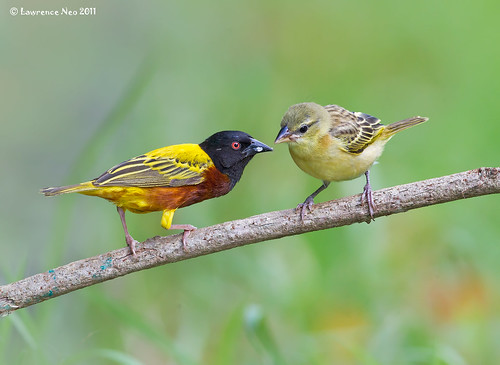
Male (left) and female (right) golden-backed weaver, Lorong Halus;
(Photo by LawrenceNeo)
The golden-backed weaver looks somewhat different from the native baya weaver, and its nest has a different shape too.
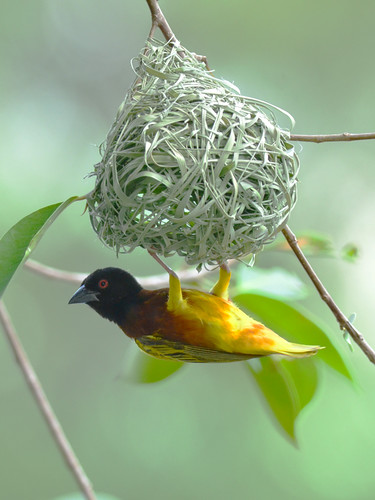
Male golden-backed weaver with nest;
(Photo by mahi_mahi_5761)
Yet another species from east Africa, the vitelline masked weaver (Ploceus vitellinus), has also been spotted in Singapore, with a male recently seen attempting to build a nest.
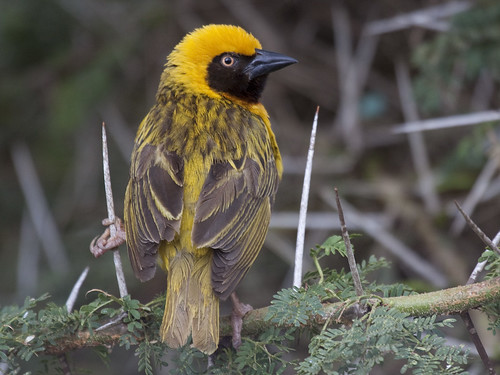
Vitelline masked weaver, Tanzania;
(Photo by Tarique Sani)
The African birds known as queleas also belong the same family as the weaver birds. The most infamous would be the red-billed quelea (Quelea quelea), said to be the most numerous bird in the world, with huge flocks darkening the sky like locusts.
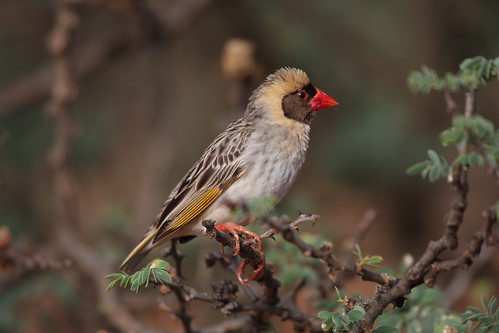
Red-billed quelea, South Africa;
(Photo by Duncan R)

Red-billed quelea flock, Uganda;
(Photo by Ken Zaremba)
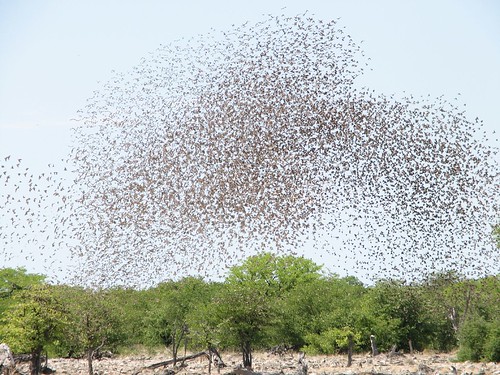
Now this is what I meant by huge flocks of red-billed quelea, Nambia;
(Photo by Alastair Rae)
Perhaps fortunately, the red-billed quelea has yet to be recorded in Singapore, although its relative, the red-headed quelea (Quelea erythrops), has been seen on a number of occasions.
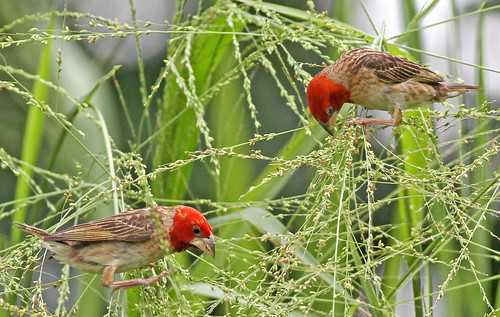
Red-headed quelea, Lorong Halus;
(Photo by limsweekin)
The bishops are another African group of weavers that are popular in the pet trade, due to the bright colours seen in males during the breeding season. 3 species have been recorded in Singapore, the southern red bishop (Euplectes orix), Zanzibar red bishop (Euplectes nigroventris), and yellow-crowned bishop (Euplectes afer).

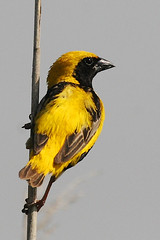
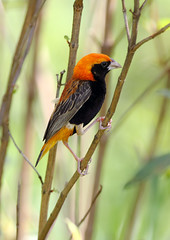
Left: Southern red bishop, South Africa; (Photo by thenunsofgaborone)
Centre: Yellow-crowned bishop, Portugal; (Photo by Oliveira Pires)
Right: Zanzibar red bishop, Tampines Eco-Green; (Photo by chrisli023)

(Photo by Francis Yap)
A pair of male Zanzibar red bishop were spotted at Tampines Eco-Green in May this year. The broken tail of one of the individuals suggests that it had only recently been freed from captivity. The date of the sighting, which was several days after Vesak Day, also suggests that it was released as part of fang sheng (放生), a practice seen in many Buddhists, who release captive animals such as birds for merit, even though there are often severe ecological consequences.
Just because a non-native species has managed to breed here, doesn't necessarily mean that it will be able to establish a self-sustaining population in Singapore. Many species of exotic birds might not be breeding very well, but are able to persist and survive due to their numbers being supplemented from time to time by more former captives. In the case of our non-native weavers, it is likely that given enough numbers, more species will be able to breed and become a more long-term element of our local avifauna.
The impact of these non-native birds is unknown, especially on the native baya weaver, but for the moment, the presence of all these exotic species does make birdwatching in Singapore a much more challenging affair, requiring one to brush up on identifying birds native to other parts of the world. One does not need to travel far to see African birds; instead, they are right here on our doorstep.